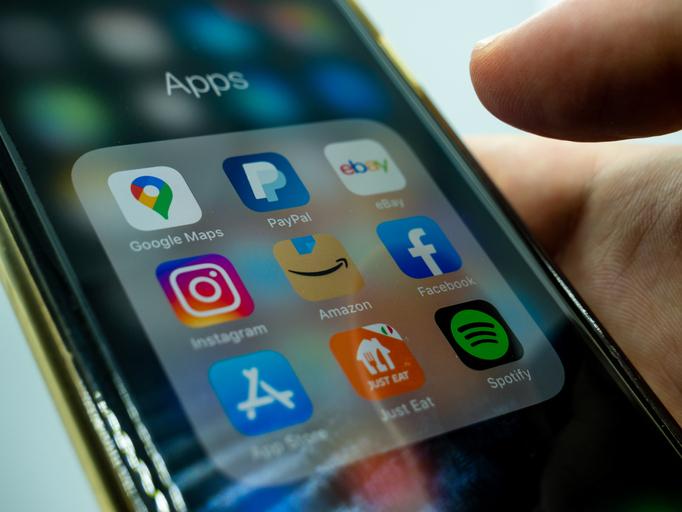
Lessons from students in how to adapt teaching to online learning
You may also like
Key Details
This video will cover:
01:31 Embracing the student voice when developing online learning
02:31 Using a range of media in your online teaching
04:50 Introducing practical, active and interactive elements
Transcript
My name’s Dr Nick Young, I’m a senior lecturer from the School of Education within Cardiff Met University. I’ve kindly been nominated for a THE award linked to innovation and I’ve been asked to create some guidance for academic staff on how they could adapt their teaching to online learning, and to try and engage students in quality teaching interactions.
So, we’re all too aware of the shift to digital environments, which was exacerbated by the pandemic, in which we provided emergency teaching rather than online learning. We’ve had some time now to reflect on what’s worked and what potentially could be developed. And we’ve had some time to engage with some quite honest feedback from our students. We’re trying to develop that. As we emerge out of the pandemic and we enter these new hybrid worlds, literature suggests that apathy and motivation for online learning and excessive screen time is at an all-time low. So how do we actually engage with these students with online learning?
I’ve actually been part of a study in which we explored transitions to HE with colleagues Emma Roland Smith and Kieran Hodgkin, and students were quite vocal in how their experiences were with online learning. So based on that, and on my own pedagogy, here are some tips to potentially how you could adapt your teaching methods.
So, firstly, really, really important to embrace student voice.
Obviously, as we enter these new virtual realms, it’s really important to consider student perspectives. I know from my own cohort, they spend a lot more time online than I do. It’s really important to start to think about the kind of media platforms that they use, they engage with, outside the lecture theatre and see if we can bring any of those into the lecture theatre.
An example of how we use student voice in our course, we tend to use the “rep” system and really effectively. I’m a year tutor and I meet with our year reps quite regularly, and something, quite recently, that we’ve been doing is speaking to them about online delivery and asking them quite openly what they think works and what potentially could be developed. Something they’ve been quite vocal about is that they’ve found our VLE – the virtual learning environment – quite clunky and quite hard to navigate. So, we’ve made a few adaptations that I’ll talk about here.
So, they talked about using a range of media. They used obviously Moodle and PowerPoint and they wanted to see a bit of a change to that. Really, I thought this was quite surprising, they wanted to see lecturers on the screen, using their hands and communicating, and trying to bring – this can actually bring – lectures to life, rather than just a faceless PowerPoint.
I tend to use Prezi Video that we’re using right here. You become quite a weatherman or woman. You see you’ve got your interactive element here. This is really nice because you can add in your PowerPoints here and then you can talk around that. And if you’re like me, you might need to sit on your hands because I’m quite, I’m gesturing quite a lot. But our students have said that they actually like that and this can bring lectures to life, and this could actually help with engagement.
It’s really important to think about the different apps and platforms that are available. And to try and think about different ways and different media you can bring to the lecture theatre. I’m not saying that you need to become an overnight TikTok influencer but we’ve used platforms such as TikTok to try and demystify the university experience.
So within that, they’re very short videos, especially for Year Ones. I’ve created videos to just try and demystify what is a seminar, what is an exam board, what are mitigating circumstances, within 60 seconds. And again, those short-format videos can work really well. Obviously, you can add in different filters and green screens as well, which work really well for teaching content as well.
We’ve used YouTube quite excessively, definitely since the lockdowns, and we’ve just found the ways that students engage with video content especially has changed. Obviously, as I mentioned, the VLE they found that quite hard to navigate and they found, to engage with video, they prefer to use platforms such as YouTube. So we created our own YouTube channel which is called Pest TV, so Prime Education Studies, and on that channel we’ve created guides to, ironically, how to use PowerPoint, how to use Teams and also there’s some lecture content there and things that they can engage with as well. We’ve used the live aspect of YouTube as well.
During the lockdowns, we used, we did quite a lot of practical sessions. For example, I did some yoga with some local schoolchildren and then the students also joined in. Everyone joined in from home so it created that online digital community, and everyone could respond and talk to each other via the comments. We also have used the Premiere aspect which can bring a bit of excitement and anticipation to sessions which potentially you wouldn’t have with VLEs.
Students were quite vocal in that they wanted to see a break from traditional didactic forms of online delivery.
Literature points to, when learning in digital environments, when they’re more active, this can actually help with engagement. So, obviously there are some simple things that you can do in terms of quizzes, asking the students to share their screens, to share things that they’ve made, interactive activities that they could be doing at home, give them time for control and to share things that they’ve done.
An example of a platform that we use in our course is Flipgrid, this is a free resource. I tend to pose a question and on Flipgrid then students can respond in video form, they can add in filters, they can add in text that we’ve got on the screen here. And the Flipgrid element, the grid element, they can also respond to each other. So, if I pose a question in a seminar, they can respond at home in their own time, and then they can watch each other and learn from each other. So, there’s that constructivism, as well.
Number four, maximise the affordances of technology, this is really important. Obviously with restrictions and global lockdowns, we couldn’t bring in some of our guest speakers, which actually brought a lot of lectures to life. So, I try to use and maximise these opportunities and actually found that speakers were much more open to coming into sessions and joining live lectures, if they didn’t actually have to move from their desk.
So, an example from our course, we’ve been engaging and learning about culture from a primary school in Rwanda. We’ve been able to share our culture, we’ve been able to actually sing to each other, share language. This has been really, really engaging and actually quite exciting for our students to engage with, without them having to leave the lecture theatre, or the comfort of their own home.
I hope these ideas have ignited some of your creative juices about how you can adapt your online delivery to try and potentially engage students. Before I leave, I just want to have a recap of some of the key takeaways.
So it’s really important to put yourself in the shoes of your students, listen to what they want to see and in what format.
Try and make the learning fun and active. And it’s really important to try and maximise the affordances, bring in different guests into the sessions to try and break from just your voice.
Finally, I’m a huge advocate obviously for online learning but I believe there’s no replacement for face-to-face delivery. This definitely came across in our study, and students were really vocal, and they really value as part of their university experience, building relationships with peers but also with lecturers in sessions, where they can ask questions.
They’ve also mentioned quite vocally as well, it’s not just about that lecture.
It’s about coming on to campus, it’s about the whole experience of going to get a book, of going for coffee after a session. And that’s really, really important to their whole university experience as well. So, the importance of face-to-face needs to be remembered through this.
Thanks very much, very much for listening and goodbye.
Nick Young is a lecturer in the School of Education and Social Policy at Cardiff Metropolitan University.
He has been shortlisted for Most Innovative Teacher of the Year in the . A full list of shortlisted candidates can be .
If you found this interesting and want advice and insight from academics and university staff delivered direct to your inbox each week, .


